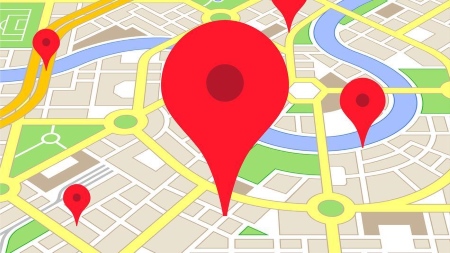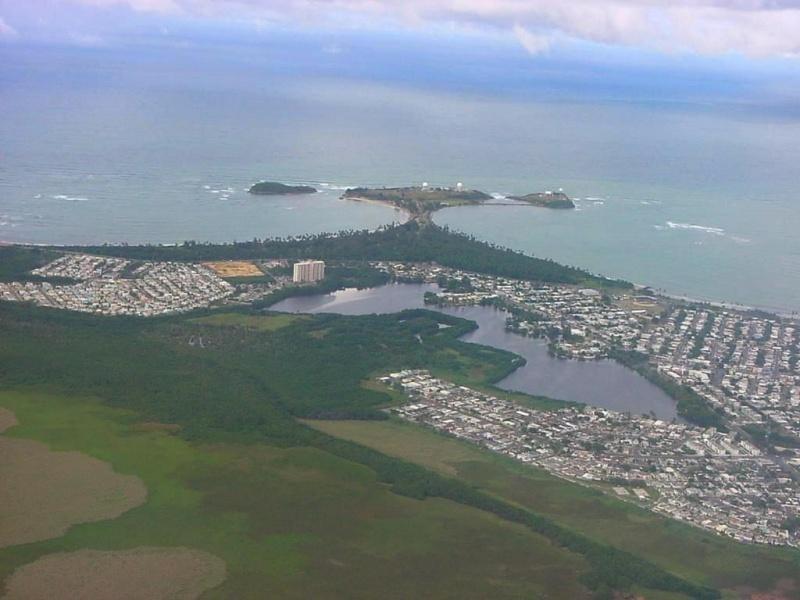San Juan, San Juan, Puerto Rico
Suggest Place to Visit
4806
Track to location with GPS |
 |
In 1898, Puerto Rico became a war booty of the United States of America during the Spanish-American War. Since then Puerto Rico has been under the control of the United States. In 1917, Puerto Ricans were granted American citizenship and the Island became official territory of the United States, with American governors appointed by the President.
In 1947, the first national elections were held and Puerto Ricans elected their first governor and, in 1952, Puerto Rico obtained its Commonwealth status. Today Puerto Rico enjoys one of the highest standards of living in Latin America.
Old San Juan was built as a military site for the Spanish naval forces. The area covers 7 square blocks of narrow streets paved in cobblestones, lined with old colonial houses with their balconies and patios. The forts and walls of Old San Juan are among the best preserved in the hemisphere. The area is full of old houses, churches and squares that represent the most appreciated architecture in the Caribbean.
La Garita, a sentinel box at Fort San Felipe del Morro (Castillo El Morro), has come to symbolize Puerto Rico and Old San Juan. The name of the city of San Juan has undergone a curious change over time. When the arrival of the Spanish to the country took place, on November 19, 1493, Admiral Christopher Columbus baptized it San Juan Bautista. Years later, the conqueror Juan Ponce de León, while exploring the north coast, discovered a wide bay which he described as ´´Puerto Rico´´. After time the names were exchanged; the island was renamed Puerto Rico, and the bay, the port, and the city, San Juan.
San Juan is the capital city of Puerto Rico, known as ´´The Walled City´´. The natural beauty of Puerto Rico did not go unnoticed by Christopher Columbus. On his second trip to the Americas in 1493, Christopher Columbus discovered the Island and baptized it with the name of San Juan Bautista.
San Juan quickly became the most important Spanish military post in the Americas. In 1508 Juan Ponce de León was appointed by the Spanish government as the first governor of the Island. Juan Ponce de León founded the original settlement, Caparra, to the west of the current metropolitan area. The city was built on an islet there in 1521. Spain, as a way of defending the island from the attacks of conquest by the English and the Dutch, built the military forts San Felipe del Morro and San Cristóbal. Both buildings are today places of tourist attraction.
Over the centuries, Puerto Rico's military force changed to be an economic force, making the island the only island in the Caribbean where industry and commerce surpassed agricultural and industrial production.
The city of San Juan is located in the northeast region of the coastal plains, north of Aguas Buenas and Caguas; east of Guaynabo and Bayamón; and to the west of Carolina and Trujillo Alto.
Old San Juan occupies the western shore of a rocky islet at the mouth of the Bay of San Juan. During the 20th century, the main population centers emerged beyond the walls of the old city and on the main island, and merged with existing groups to the south and east of Old San Juan. As a result, the city is now made up of a variety of neighborhoods or neighborhoods.
To the east of Old San Juan lies the district full of Condado hotels and condominiums, left on land that used to be owned by Pablo Ubarri Y Capetillo, a Spanish railroad builder and count of San José de Santurce during the Spanish colonial period. Beaches such as the Puerto Rico Ocean Park are popular with swimmers, surfers and kitesurfers, they are present along the district's Atlantic coastline.
Near Condado there are two different commercial areas, Santurce and Miramar. Miramar is primarily a residential area located south of the Condado Lagoon. It includes the old Miraflores neighborhood, as well as a drained banana plantation and a landfill where the first airport in Puerto Rico was built, the Isla Grande Airport (or the Fernando Luis Ribas Dominicci Airport). Miramar welcomes the Puerto Rico Convention Center as well as some of the docks of the Puerto de San Juan ships.
Santurce, originally called "San Mateo de Cangrejos", was the destination for freed African slaves during the city's early days. After Pablo Ubarri asked permission to join Santurce with San Juan via tram in 1878, the municipality was divided into three parts and its main town was united with the city and renamed using the language of the Spanish Santurce (Santurtzi in Basque language) . In Santurce is the Museum of Art of Puerto Rico.
To the south of Santurce is one of its old neighborhoods, Hato Rey, which was land to raise the cattle of the Royal Government (hence its name "the king's herd") around the 16th century. Hato Rey is currently considered the financial center of the island. A section of this district is referred to as the Golden Mile (actually 0.47 miles in length), due in part to the large number of banks and companies located there.
In the southern part of the city is the mostly residential area of Río Piedras. Río Piedras used to be a city apart, founded in the mid-1850s, where there were sugar cane plantations and properties owned by some of San Juan's wealthiest inhabitants (as well as its working-class staff). Spanish colonial governors also had their summer homes there, on the land where it eventually gave way to the main campus of the University of Puerto Rico. In 1951 the municipalities of San Juan and Río Piedras were united to delimit the current perimeter of San Juan. Today, Río Piedras is home to the traditionally renowned Plaza del Mercado and comprises the largest area of the municipality of San Juan.
Currently the Municipality of San Juan is made up of eighteen neighborhoods, being the San Juan Antiguo neighborhood, made up of the Isleta de San Juan, the first to be established within this municipality in 1521. By then the municipality had a territorial area of approximately 2.6km². Later, in 1863, the first capital suburb known as Santurce was annexed, causing the territory of the capital city to increase by more than 600% to 16.2 km². This neighborhood was part of the then diluted municipality of San Mateo de Cangrejos. The other neighborhoods of San Mateo, understand those of Cangrejos and Hato Rey, were distributed among the municipalities of Carolina and Río Piedras respectively. Hato Rey is the financial district of the city of San Juan.
The last major expansion of the municipality of San Juan occurred in 1951 through Legislative Project 177 where, as a result of the referendum promoted by then-Governor Luis Muñoz Marín, the Municipality of Río Piedras was annexed to the Municipality of San Juan. In this way the territory of the capital increased by about 107.6 km² to its current size of 123.9 km² or what is equivalent to a growth of 765%.
San Juan enjoys an average annual temperature of 28 ° C; although temperatures of 32 ° C or more are not uncommon during the summer, especially if the winds come from the south. The temperature can drop to as low as 18 ° C during winter, although the average winter temperature is 21 ° C. Since 1950 The lowest recorded temperature was 16 ° C on March 3, 1957 at the main Luis Muñoz Marín airport. The rain is fairly well distributed throughout the year, but the months of February, March and April are the driest.
The walled city is home to cafes, art galleries, museums, wonderfully restored homes, and unique shops.
The new city is home to prestigious banks such as the Oriental Bank and Trust, Banco Popular de Puerto Rico, BBVA, Westernbank and others. In addition, Plaza Las Américas, the largest shopping center in the Caribbean, is located here.
Art and culture
These are some of the few ´´cultural´´ events that we can find in San Juan, despite not being specifically a country and belonging to the United States, we preserve a very rich culture and we perpetuate it from generation to generation.
• International Folk Festival - January
• Musical Theater Festival - January
• San Sebastián Street Festival - January
• Festival Casals - February
• Puerto Rican Theater Festival - March
• Puerto Rican Music Party - May
• National Troubadour Contest - May
• Festivities of San Juan Bautista - June
• Summer Festival - June
• Fiestas de la Bahía - July
• Ceramic Festival - September
• Cultural Festival of the Child - September
• National Contest of Cuatro - December
Places of interest
In Old San Juan:
• Park of the pigeons
• Chapel of Christ
• Fort San Felipe del Morro
• Fort San Cristóbal
• Palace of Santa Catalina (La Fortaleza)
• House Town Hall
• Plaza de Armas de San Juan
• The capitol
• Metropolitan Cathedral of San Juan
• Archbishopric Primate of San Juan
• Pablo Casals Museum
• Museum of Art of History of San Juan
• Casa Blanca (home of the first Spanish governor of Puerto Rico, Juan Ponce de León, when the island was a Spanish possession)
• Telluric Totem
• Ballajá Barracks
• Colegio de Párvulos (first Catholic school for primary education in Puerto Rico; still operating)
• Santa María Magdalena de Pazzis Cemetery
Outside of Old San Juan:
• El Cañuelo
• Club Gallistico
• Laguna del Condado
• Botanical Garden of San Juan
• Coliseum of Puerto Rico Jose Miguel Agrelot
• Naty Rabia's house
• Hato Rey
• County
• Green Island
• Río Piedras
Comments
We don´t have yet any comments about:
San Juan
San Juan
Be the first to leave a comment as it is very important to inform other people
Outros locais a visitar
Within a radius of 20 km from:San Juan
Porto Rico |
| 1,6 Km |
 |
Punta Salinas |
| 8,6 Km |
 |
Hotel reservation near San Juan within a radius of 20 km
Why to book with Clube Net
The best prices
Our partnerships with the world´s largest operators offer research on the best market prices.
More options
At Rotas Turisticos you can book the hotel, buy the air ticket, book the transfer from the airport to the hotel and vice versa, book the local excursions, rent the car, take travel insurance and consult the places to visit and where to go.
Holiday Tips & Destinations
Hundreds of holiday destinations with all the options that allow you to easily choose the destination that best suits your dream vacation.
Clube Net
Links






